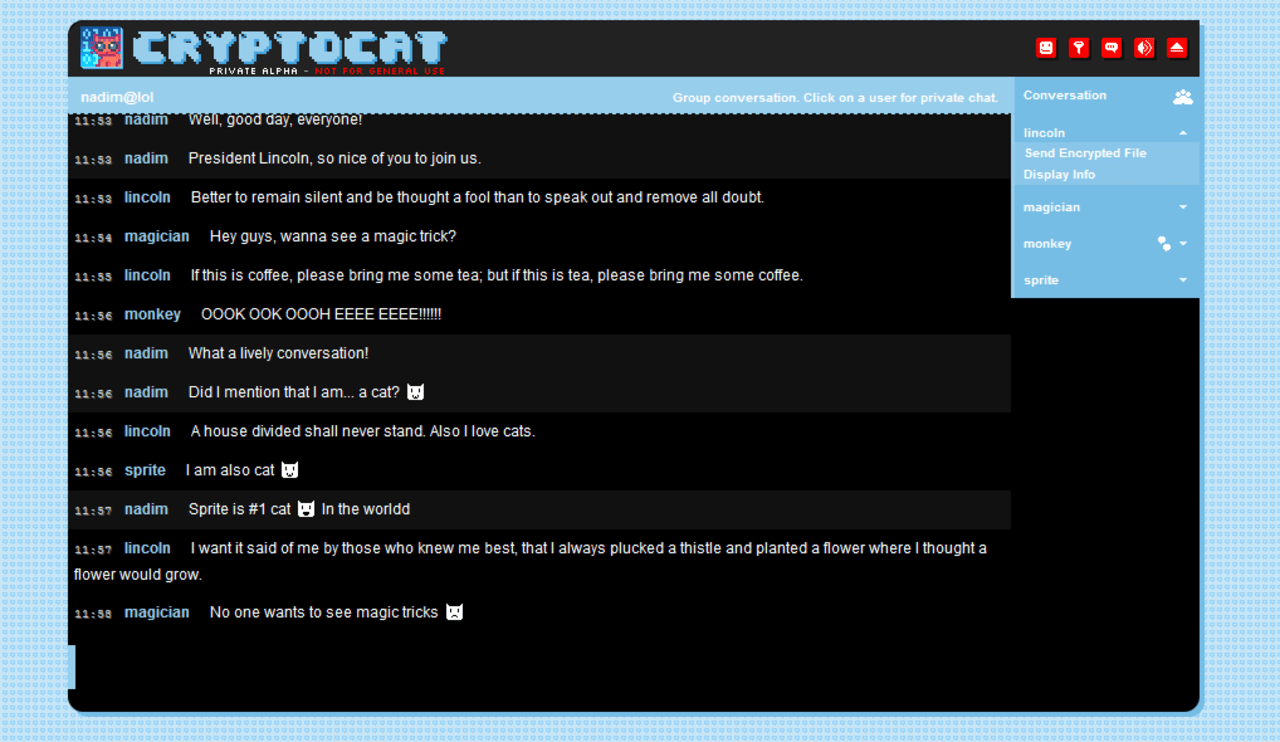
The Cryptocat developers have since responded with a post on their development blog, expressly thanking Steve Thomas for his effort. Thomas says that the hole makes it possible to decrypt a seemingly secure, encrypted chat recording in a matter of minutes. Cryptocat can be used as a Browser extension for Chrome, Firefox and Safari.


Free cryptocat cracked#
The idea is to prevent attackers from drawing conclusions about previous or subsequent keys when one key is cracked on a communication channel, so that earlier and later messages continue to be protected. This technique generates new key pairs for every chat to create what is known as Perfect-Forward-Secrecy (PFS).
Free cryptocat software#
The software uses Off-the-Record (OTR) messaging to encrypt users' messages. The expert was especially angered about the bug fix description, saying that the developers made an attempt to cover up their mistake claiming the fix became necessary because of backwards compatibility problems.Ĭryptocat is designed to provide a securely encrypted online chat facility. This meant the private Elliptic Curve Cryptography (ECC) keys would be "ridiculously small" and would present an ideal attack vector for brute force attacks. A function that expected an array of 15-bit integer values was actually handed a string of the digits 0 to 9 with the ASCII value of the digit taking the place of the 15-bit integer value and shrinking the possible values from 2^15 to 10.
Free cryptocat code#
Thomas says that the vulnerability was triggered by a flaw in the code for converting strings into arrays of integers. On his web site, Steve Thomas has a massive go at the software developers. The security hole affects all versions of the chat software since 2.0, as the hole was only discovered and closed in version 2.0.42.
Free cryptocat manual#
The options are the following: no proxy, auto-detect proxy settings, system proxy settings, manual configuration, and automatic configuration.According to security expert Steve Thomas, messages sent via Cryptocat between 17 October 2011 and 15 June 2013 are compromised. Your next steps depend on whether or not you want to use a proxy and, if you do, what type of proxy you wish to set up. Click the “Settings” button and choose one of the five proxy options. Click the “Setting” option (you automatically get to the “General Settings” window) and scroll the screen down till you get to the “Network Settings” section. The button is located at the upper right corner right below the close button (the instructions are written for Firefox Version 89 but can be used for earlier ones). Setting up a proxy server starts with opening the Firefox menu. Besides, with Firefox, it is possible to choose the SOCKS-protocol version you need and make remote DNS requests when using SOCK5. Unlike Chrome or Internet Explorer, which use only system-wide settings, it allows you to customize the proxy settings. Mozilla Firefox stands out among other popular browsers as it has more options for setting up a proxy.

/article-new/2014/03/cryptocat.jpg)


 0 kommentar(er)
0 kommentar(er)
